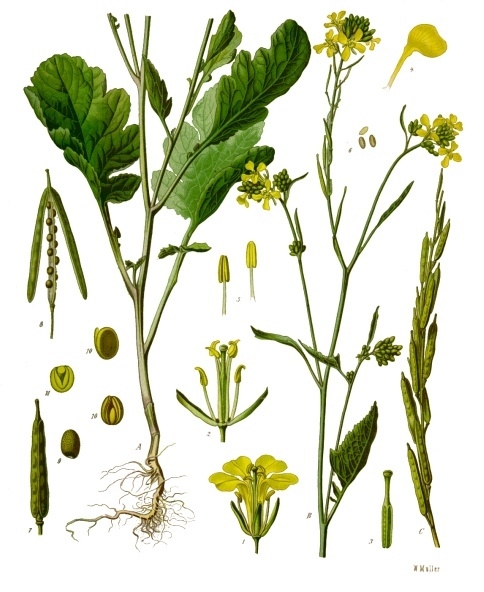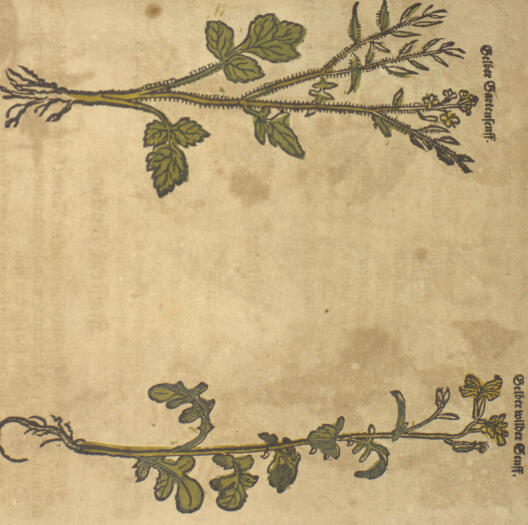

botanical background
order: Brassicales
family: Brassicaceae
genus: Brassica
species: Black Mustard (Rhamphospermum nigrum syn. Brassica nigra)
attributes: annual, herbaceous plant, up to two meters in height, blossoms stand in terminal, yellow bunches, fruits are husks
origin: indigenous to Europe and northwestern China until Ethiopia, probably originally from the Mediterranean
habitat: by now all around the world
in the Bible
And He said, What is the kingdom of God like? And to what shall I compare it? It is like a grain of mustard seed which a man took and threw into his garden. And it grew and became a great tree, and the birds of the air lodged in its branches.
Luke 13,18-19
In the Old Testament in Hebrew there is no word for the black mustard, but in the originally Greek New Testament there is (σίναπι sinapi).
An example for the use of the term can be found in a parable in the Gospel of Mark (Mk 4,30-32 par; Lk 13,18f.). Parables represent general religious wisdoms and focus on a definite key message. Christ includes many mental pictures in his teachings about the Kingdom of God. The length of the story can vary. The fictive mental image is imbedded in the general plot and focused on the key message. At the same time it inspires the adressee to reflect over suggested actions.
The mustard plant which is also mentioned in chapter 13 of the Gospel of Luke can grow up to a height of three meters. It was used as a natural remedy, while it‘s leaves could be eaten.
mentions: several
other text passages (selected):
Mark 4,30-32
Matthew 13,31-33
Luke 13,18-21
Luke 17,6
Matthew 17,20
Sources
Modern King James Version.




